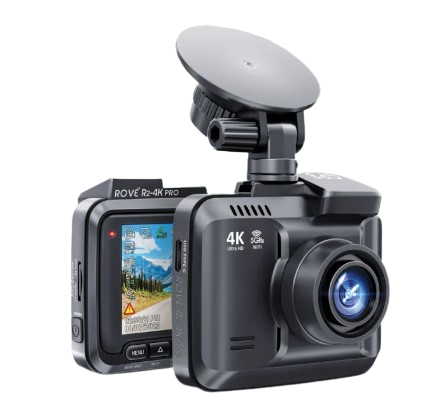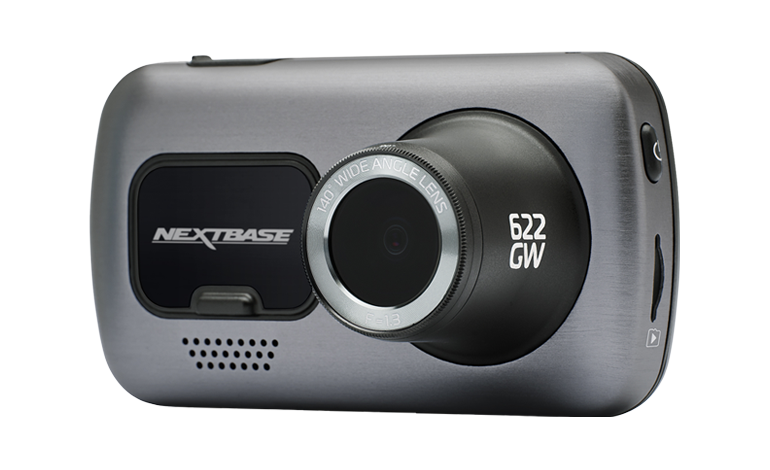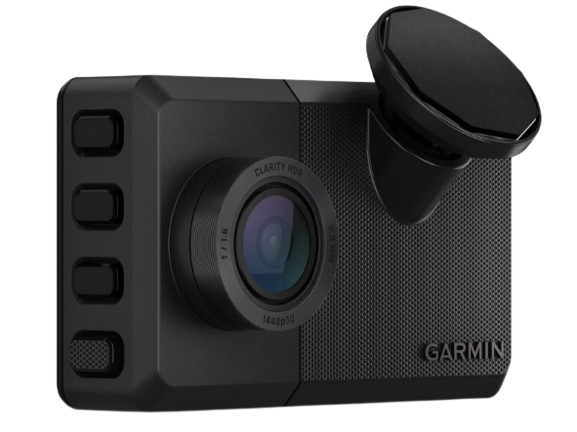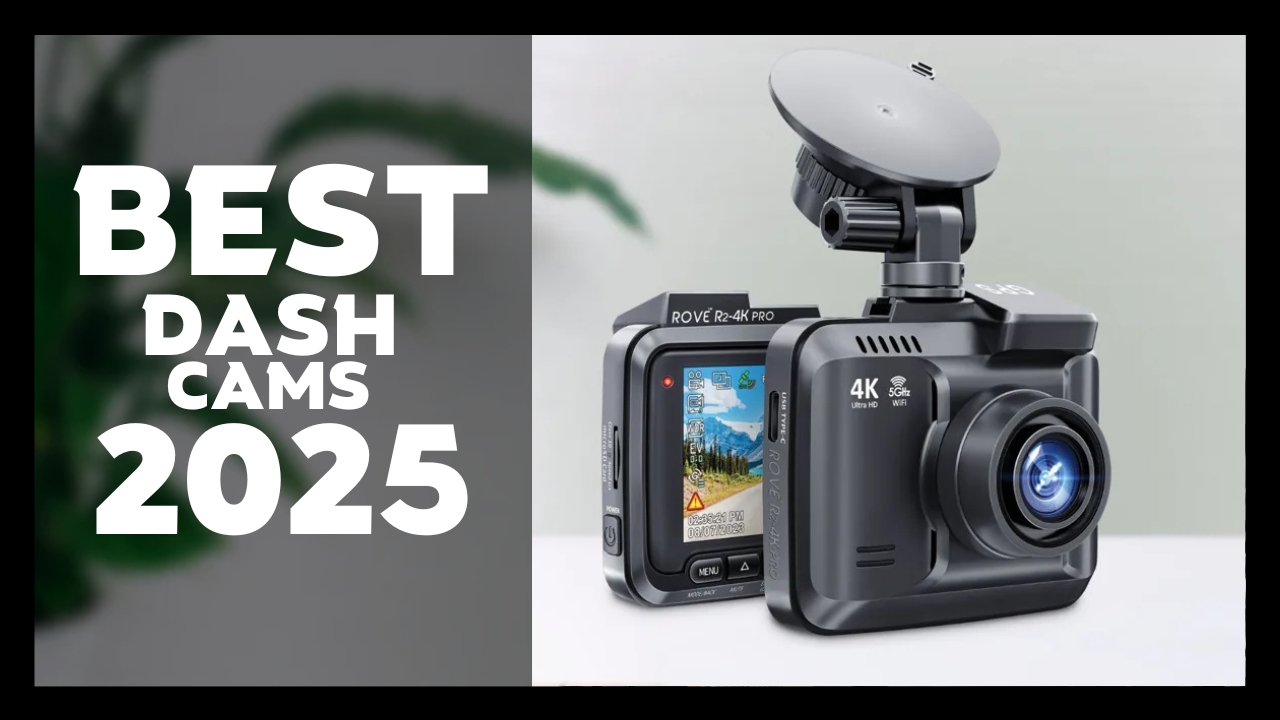Whether you want to protect yourself from liability or just make sure you’re safe, a dashboard camera can be your second pair of eyes on the road. Start by looking at the best dash cams we’ve tested to assist you choose the best model.
Table of Contents.
- No 1 Rove R2 4K Pro
- No 2 Nextbase 622GW
- No 3 Garmin Dash Cam Live
Top 3 Best Dash Cams In 2025
No 1 Rove R2 4K Pro

The Rove R2-4K Pro is a single-channel dash cam capable of 2160P captures. It’s black and about average in size at 2.91-inches wide, by 2.35-inches tall, by 1.43-inches thick at the lens body On the back of the Rove R2-4K Pro is a 2.4-inch color display, with five buttons below it for navigation: Menu, up/mute, emergency lock/Wi-Fi, down/LCD off, and OK.
On the right is the Type-C power jack, while on the left are the MicroSD card slot and power button. The R2-4K Pro ships with a vacuum mount that’s adjustable right/left and vertically, but you’ll need pay a bit of attention to the rotational angle.
Placing the suction-breaking pull tab at around 11 o’clock will get you pretty close. This is true of most suction mounts. Once you have it set, the camera easily detaches from the mount.
Pros
- Small form factor
- Good captures
- Integrated GPS
- Low-priced Considering the features
Cons
- Defaults to 2K rather than 4K
- Using the app requires an account
No 2 Nextbase 622GW

The Nextbase 622GW featuring a built-in polarizing filter, image stabilization, 4K video resolution and excellent Night Vision mode, the resulting footage is of excellent quality, making it extremely easy to pick out number plate and vehicle details in all conditions.
The addition of Alexa voice control and What3Words emergency geolocation are welcome added bonuses.For a start, the 622GW features a new Ambarella H22 quad-core chipset, which lets you capture pin-sharp 4K footage at 30fps. Better still, the firm has installed a removable polarizing filter, which allows drivers to rotate a bezel on the front of the lens to produce beautiful, glare-free footage.
Nextbase also now offers an upgrade to its coveted EmergencySOS feature in this camera, thanks to the addition of what3words geocoding. Emergency and breakdown services are increasingly looking to the innovative geocode system to provide help faster, as the technology can precisely pinpoint a location within three meters of a stricken vehicle, for example.
Pros
- Superb image quality
- Great poor-weather performance
- Intuitive interface
- Simple incident recording and storage
Cons
- Rear camera requires wiring
- Fairly bulky
- Requires large SD card
- App can be frustrating
No 3 Garmin Dash Cam Live

The full-featured Garmin Dash Cam Live records your driving trips in excellent quality, offers live monitoring, includes lots of driver assists, and pairs with an intuitive mobile app The box includes the camera, two small mounting discs with adhesive on one side for attaching the cam to your windshield, two USB-A-to-micro-USB cables (5 feet and 13 feet), a 12-volt (V) USB adapter, and a basic product guide.
If your vehicle doesn’t have a 12V socket or a fully Constant Power cable from Garmin that plugs into your OBDII port and gives you an extra USB port. This isn’t absolutely necessary, though some features such as Parking Guard and Remote Live View require constant power. Your car’s USB ports might lose power when it turns off, so this accessory is one way to ensure that the Garmin is constantly running.
Under the hood are GPS, Wi-Fi (2.4GHz), and LTE cellular radios, a G-sensor for crash detection, and a rechargeable battery that gives the device up to 30 minutes of power. A microSD card slot and a speaker (for various alerts) sit on the bottom edge.
Pros
- High-res 1440p camera
- Remote live view
- Driver assist features
- Supports voice controls
- Cellular and Wi-Fi connectivity
- Cloud and local video storage
- Time-lapse recording
- Ships with microSD card
Cons
- Pricey
- Some features require a subscription
What Is a Dash Camera?
A dash cam is a mountable camera that you can secure to your windshield or rearview mirror. It’s important to go for a test drive after you attach one to make sure it doesn’t obstruct your view and that it’s easy to access. Most dash cams have built-in screens for changing settings and viewing videos (don’t do this while driving), but others require you to pair them with a smartphone app.
Many of the dash cameras we review record in at least 1080p video, though some can capture 4K clips. Make sure to purchase the largest memory card your dash cam accepts and regularly transfer the clips from the camera to your computer. The best dash cams automatically start recording once you start your car, so your card might fill up more quickly than you think. If you do run out of storage, keep in mind that many devices will overwrite old videos. It may be more convenient to pay for a cloud storage plan (if available) that has space for seven to 30 days’ worth of recordings rather than rely on SD cards.
Consider a camera’s field of view; a wider-angle lens captures more of the road in front of and around you. This comes in handy for taking snapshots when driving, though smartphones are often better at this task because some dash cams downsize these captures.
Which Dash Cam Has the Best Driver Assists, Connectivity, and Voice Features?
Some dash cams feature high-tech driver assists, such as lane departure warnings and forward collision alerts that can keep you safe. Meanwhile, alerts for red lights and speed cameras help you avoid traffic tickets. Some devices even alert you to school zones and upcoming curves.

